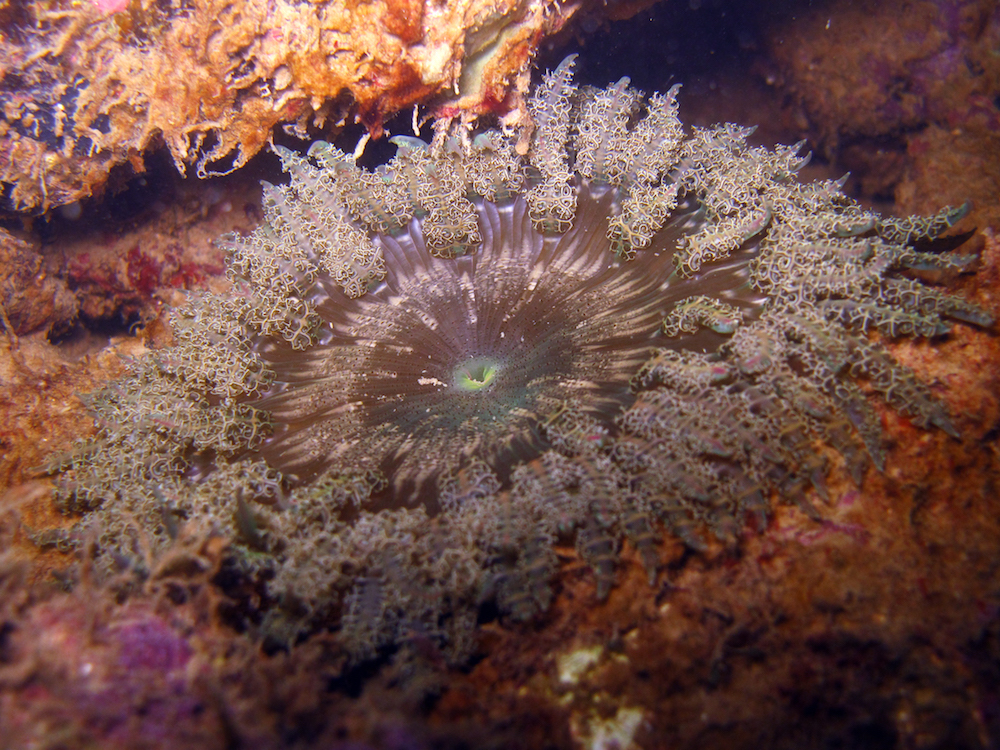Identifying Nutrient Deficiency in Plants
Do you know? Plants require 16 essential nutrients to grow normally.
Nutrient deficiency occurs when a plant lacks sufficient quantity of an essential nutrient required for growth. Without sufficient essential nutrients, plants will not grow well and show various symptoms to express the deficiency.
Learn more about nutrient deficiency as you stay at home during this period.
Essential Nutrients
Plants obtain carbon, hydrogen and oxygen from water, air and sunlight, to make food for growth. They also require the following for healthy growth:
Macronutrients
Namely: Nitrogen, phosphorus, potassium, sulphur, calcium and magnesium. These are required by plants in relatively large amounts.
Micronutrients, also known as trace or minor elements
Namely: Copper, manganese, zinc, iron, boron and molybdenum. These are required by plants in smaller quantities.
Common Nutrient Deficiencies
|
Mobile Nutrients Symptoms of deficiency generally appear in older leaves at the lower part of the plants. |
|
|
Nitrogen (N) Nitrogen is one of the major nutrients commonly applied as fertilisers. Plants absorb Nitrogen in the form of ammonium or nitrate which can be readily dissolved in water and leached away from soil. Nitrogen is needed by plants to promote rapid growth especially for fruit and seed development. Also, it increases leaf size and quality, and hastens plant maturity. Deficiency symptoms: General chlorosis of entire plant to a light green followed by yellowing of older leaves proceeding towards younger leaves. Plants become spindly, stunted and secondary shoots develop poorly if the initial symptoms are not corrected. |
 Whole leaves turn yellow, starting from the lower to upper leaves. |
Phosphorus (P) Phosphorus is the second major component in fertilisers. Plants absorb Phosphorus in the form of phosphate. Phosphorus is needed by plants to promote photosynthesis, protein formation, seed germination, bloom stimulation and budding. It also hastens maturity. Deficiency symptoms: Purple or bronze colouration on the underside of older leaves due to the accumulation of the pigment, Anthocyanin. Affected plants develop very slowly and are stunted compared to normal plants. |
Purple or bronze discolouration in the upper and lower sides of older leaves. |
|
Potassium (K) Potassium is the third major component in fertilisers. Plants absorb Potassium as an ion, which can be readily leached and lost through run-off from the soil. Potassium is needed by the plants to promote formation of sugars for protein synthesis, cell division in plants and for root development. It also increases the plant’s resistance to diseases. Deficiency symptoms: Leaf edge chlorosis on new matured leaves followed by interveinal scorching and necrosis from leaf edge to the midrib as deficiency increases. The chlorosis in potassium deficiency is irreversible even if potassium is given to plants. |
 Browning or yellowing on leaf edges of newly matured leaves. |
Magnesium (Mg) Magnesium is a structural component of the chlorophyll molecule. Magnesium is needed by plants to promote the function of plant enzymes to produce carbohydrates, sugars and fats and in the regulation of nutrient absorption. Deficiency symptoms: Older leaves are chlorotic in between veins, often known as interveinal chlorosis. In severe deficiency, plant growth rate drops, leaf size is reduced, and lower leaves are shed. |
Cropped example:
Lower leaves are paler and chlorotic as compared to upper leaves, with dark green veins. This is known as interveinal chlorosis. |
|
Immobile Nutrients Symptoms of deficiency generally appear in younger leaves at the upper part of the plants. |
|
|
Calcium (Ca) Calcium is a constituent of plant cell wall and provides structural support to cell walls. It is immobile within plants and remains in the older tissue throughout the growing season. Hence first symptom of deficiency appears on the younger leaves and leaf tips. Calcium is needed by plants to produce new growing points and root tips. Deficiency symptoms: New foliage, buds and roots have stunted growth. Younger leaves curl downwards with browning of leaf edges and leaf tips, also known as tip burn. In some plants, they may also show abnormally green foliage. Roots become short and stubby. |
New leaves are paler with stunted growth as compared to the older leaves. |
|
Iron (Fe) Iron deficiency is similar to Magnesium, except that it appears on young leaves and shoots instead of older leaves. Iron is needed by plants for the synthesis of chloroplast proteins and various enzymes. Deficiency symptoms: Light green to yellow interveinal chlorosis on newly emerging leaves and young shoots. It is common to see shoots dying from the tip inwards. In severe cases, newly emerged leaves may reduce in size and turn nearly white, with necrotic spots. |
Young leaves are paler as compared to matured leaves, with dark green veins. |
|
Manganese (Mn) Manganese acts as an enzyme activator for nitrogen assimilation. Manganese is needed by plants for photosynthesis, respiration and enzyme reactions. Deficiency symptoms: Newly emerging leaves exhibit a diffused interveinal chlorosis with poorly defined green areas around the veins. Chlorosis and necrotic spotting are common symptoms. In severe deficiency, new leaves become smaller and tip dieback can occur. |
Yellowing between veins and broad green areas around veins in younger leaves. |
|
Zinc (Zn) Plants require zinc to activate plant growth regulators, particularly Auxin and Indole Acetic Acid (IAA). Zinc is needed to activate plant growth regulators. Deficiency symptoms: Chlorosis, bronzing or mottling of younger leaves. Interveinal chlorosis of the young leaves followed by reduced shoot growth with short internodes, as well as small and discoloured leaves giving the affected part a rosette appearance. |
 Yellowing between veins and bronze spots in younger leaves. |
|
Boron (B) Boron is absorbed from the soil by plants as borate. Boron is needed in the process of cell differentiation at the growing tips of plants where cell division is active. Deficiency symptoms: Plants become stunted and deformed. Proliferation of side shoots known as ‘witches broom’ can be observed as the main stem falls to ensure the growth of the lateral shoot stays dormat. This is known as the loss of apical dominance. In flowering shrubs, new growth becomes dark green and they develop cupped or puckered small brittle leaves with short internodes. |
 Leaf buds are discoloured. They will break and drop eventually. |
Gardening with Edibles
The City in Nature vision seeks to bring greenery closer to all residents. The community plays a key role in the ownership and stewardship for nature which will benefit our health and well-being.
NParks is partnering residents to make Singapore our City in Nature and spark a love for community gardening through the Gardening with Edibles initiative launched in June 2020. Under this programme, some 400,000 free seed packets have been distributed to interested members of the public. Relevant resources are also available online, to guide gardeners along the way.
Also, NParks is expanding the allotment gardening scheme and the Community in Bloom programme, to welcome even more residents into the gardening family.
The Gardening with Edibles initiative is aligned with Singapore’s national strategy to strengthen our food resislience. The “30 by 30” goal, led by the Singapore Food Agency, aims to produce 30% of Singapore’s nutritional needs locally by the year 2030. The programme is jointly funded by founding partners DBS Bank and Tote Board through the Garden City Fund.
Learning More
If you are a gardening newbie, visit NParksSG, our refreshed YouTube Channel that serves as a one-stop repository for close to 300 video resources. It covers topics ranging from types of soil needed for your garden and how to plant, harvest and even cook your edibles.
How can you make your garden more welcoming to bees? Learn more here.
Keep your garden safe from attack by insect pests. Learn more about five such common pests of edible plants here.
Learn more NParks’ Plant Health Services whose work helps keep Singapore safe from the incursion of exotic plant pests.
For more information about the flora and fauna found in Singapore, please visit Flora and Fauna Web.
If you like what you read, follow us on Facebook, Instagram and Telegram to get the latest updates.
Text and photos by Jiang Qiuyun
About the writer
Jiang Qiuyun is a Nematologist in the Entomology & Nematology Section under the Plant Science & Health Branch. Her primary work includes the diagnosis of pests and providing advice for plant pest management and soil health. She is also working on the application of entomopathogenic nematodes and parasitic wasps as biological control agents against insect pests. She is currently pursuing a Master’s degree in Environmental Biology, with specialisation in Plant Physiology and Environmental Toxicology.










Have views or comments on this article? Let us know via this form. If you would like to give us feedback on any other areas relating to our parks and gardens, please submit via https://www.nparks.gov.sg/feedback